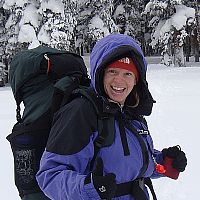Neal et al., 2011
Modeling moisture fluxes using artificial neural networks: can information extraction overcome data loss?
Neal A.L., Gupta H. V., Kurc S. A., and Brooks P.D. (2011)
Hydrology and Earth System Sciences 15: 359-368
-
Catalina-Jemez, INVESTIGATOR
-
Catalina-Jemez, INVESTIGATOR
Abstract
Eddy covariance sites can experience data losses as high as 30 to 45% on an annual basis. Artificial neural networks (ANNs) have been identified as powerful tools for gap filling, but their performance depends on the representativeness of data used to train the model. In this paper, we develop a normalization method, which has similar performance compared to conventional training approaches, but exhibits differences in the timing of fluxes, indicating different and previously unused information in the data record. Specifically, the differences between half-hourly model fluxes, especially during summer months, indicate that the structure of the information content in the data changes seasonally, diurnally and with the rate of data loss. Extracting more information from data may not improve model performance and indicates the need for improved data and models to address flux behavior at critical times. We advise several approaches to address these concerns, including use of separate models for day and nighttime processes and the use of alternate data streams at dawn, when eddy covariance may be particularly ineffective due to the timing of the onset of turbulent mixing.
Citation
Neal A.L., Gupta H. V., Kurc S. A., and Brooks P.D. (2011): Modeling moisture fluxes using artificial neural networks: can information extraction overcome data loss?. Hydrology and Earth System Sciences 15: 359-368. DOI: 10.5194/hess-15-359-2011
Explore Further


